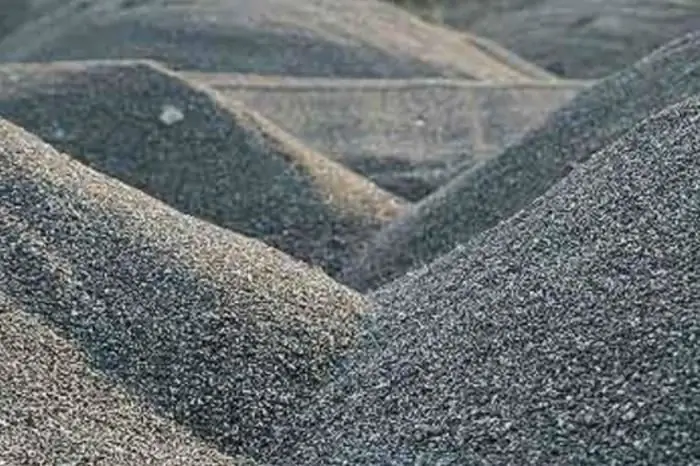2026 Author: Howard Calhoun | [email protected]. Last modified: 2025-01-24 13:10:37
Fibreboard recently celebrated its 50th anniversary. During this time, it became clear that the quality of MDF cannot be compared with facings with other materials. For half a century, manufacturers have managed to improve this material. Today it is produced in the form of panels and sheets. From them you can make furniture walls, doors, and veneer any surface.
Material density

Fibreboard is made from fine sawdust. Plates are made from round wood and its waste. At the production stage, the raw materials are ground and subjected to high-pressure steam treatment. The frayed raw material is dried and sent for gluing and pressing.
The density of MDF kg per m3 is on average from 600 to 850. These values can be more or less. Before purchasing the material, it is imperative to determine this characteristic. The quality depends on this indicator, while the type of wood does not play a special role. The concept of density is a scalar physical quantity defined by the ratiomass to volume. The density of the MDF board can be different, so this material is divided into categories and is abbreviated as LDF and HDF.
The first label should be understood as "low density particle board". This indicator varies from 200 to 600 kg/m3. The 2nd of the varieties mentioned is a high density board. This indicator here can exceed 800 kg/m3. High and almost always the same hardness is possessed by the upper layers of the material, the thickness of which is 1 mm. Deeper density drops by half.
If you carry out milling along the layer and open the material from the inside, you can be sure that with a decrease in density, the fibers are less connected to each other. When processing plates that are close to LDF, fibers that are weakly bonded to each other peel off at a sufficient depth. Because of this, irregularities appear on the finish. To correct the situation, additional processing is carried out by grinding and thermal rolling. This may entail additional costs and an increase in the cost of MDF.
Characteristics and application of medium density material

MDF density varies from 600 to 1000 kg/m3. The binding element here is carbamide resins modified with melamine. This guarantees a low formaldehyde emission, which can be compared with the emission of natural wood. Formaldehyde emission class - E1.
During the production process, raw materials are given special properties, namely:
- water resistant;
- biological stability;
- flame retardant.
Medium-density MDF is used in the manufacture of furniture, as well as in interior decoration. In the latter case, we are talking about the creation of economical panels and wall panels, as well as laying laminated flooring. MDF is suitable for the manufacture of speaker cabinets, because the material has a homogeneous structure and absorbs sound well. It is easily processed and can be used in the manufacture of cabinets, in particular, facades with carving elements.
The material is easy to machine and does not shed chips, making it ideal for creating curved holes, shapes and milling planes of varying depths. MDF is widely used in the manufacture of gift boxes and containers.
High density material and its application

High density MDF is similar to low and medium density counterparts. This material has high strength, so it is more reliable. The standard thickness is 4 mm. Such plates are used to achieve the following goals:
- wall alignment;
- floor coverings;
- production of interior doors;
- car building;
- when lining the interior of the car;
- production of trade and exhibition equipment;
- hide communications if necessary.
Specifications

The density of MDF 16 mm is 780 kg/m3. But this feature is not the only one thatyou should know. For example, an important feature is the ability to withstand a pressure of more than 15 MPa for boards with medium hardness. Another advantage is resistance to microorganisms and microbes. You may also be interested in the moisture content of the material, which varies from 3 to 10%. The modulus of elasticity is 1700 MPa. Tensile strength is 17-23 MPa.
Formaldehyde content can be less than or equal to 8. These figures depend on the thickness and dimensions of the sheets, as well as their composition. The density of MDF 19 mm is 750 kg/m3. This is true for the material brand Kronopol. The thickness of the sheets can vary from 5 to 25 mm. If they have a panel version, then they can be:
- leaf;
- type-setting;
- rack.
The latter are 10 cm boards, the width of which varies from 11 to 29 centimeters. The length is 4 m. The minimum length is 2 m. High-density MDF can be represented by stacked square panels, the dimensions of which vary from 29 to 95 cm. This type of material is suitable for creating a mosaic pattern on the surface.
As for the sheet version, such MDF can have dimensions from 1.2 to 2.5 m. You can find out the thickness of the material by looking at the marking. The density of MDF is no less important than the composition of the material, which can contain more than 90% sawdust. The remaining 10% are formaldehydes and resins. The material has a high probability of breaking. This is due to the fact that the panels are not made from solid wood. Does not contain insidesubstances hazardous to human life.
cutting tips

When you already know the density of MDF, you can study the tips for cutting the material. It is best to purchase products with standard sizes and with factory processing. If there is a need to carry out sawing, it is better to entrust it to specialists. In this case, special format-cutting machines are used.
Craftsmen know that workpieces are stacked upside down if cutting is carried out on the machine. When starting the saw, the movement of the plates must be progressive and smooth. The teeth are immersed by 1 mm. Proper cutting allows you to get accurate workpieces in the right dimensions. This process is labor intensive, but produces parts for making furniture and doors.
Features of using MDF

MDF is great for mounting on a variety of surfaces. To carry out the work, you should prepare:
- pencil;
- building level;
- corner for marking a right angle;
- hacksaw;
- screwdriver;
- perforator;
- hammer;
- screws;
- dowels.
It is necessary to start work by cleaning the surface where the fastening will be carried out. The base is cleaned of dirt and dust. It is necessary to make a thorough inspection of the material for mold and fungus. If you plan to make a ceiling from MDF, you will need guide profiles, wooden blocks and suspensions. The bars will perform the functiontransverse frame parts.
But if you plan to attach the panels to the wall, there will be enough bars of wood or plastic crates. In order to make the mounting process easier, you should use clamps. This will make it possible to fix part of the coating on the crate, facilitating the task. The main difficulty lies in making accurate markings for the crate, which will allow you to fix the elements.
Do-It-Yourself Coloring Tips

MDF boards are well suited for kitchen furniture and are used as an alternative to plastic. You can buy a kitchen made of MDF with photo printing, but if finances do not allow, then you can paint the surface of the plate in the color that you prefer. In this case, you need to adhere to a certain algorithm of actions. At the first stage, the surface is well cleaned, washed and sanded.
Then you need to wipe it with a solvent. The primer at the next stage is applied in 2 layers with a break for drying. Using a brush or balloon, a layer of paint is applied to the surface. You can use a spray gun, it will cost more, but the result will be better. After the paint has dried, you can apply a layer of varnish on top, which will give the product a shine and perform a protective function.
Recommendations for material selection
As for the materials used in the processing of MDF, it is better to choose a mixture based on polyurethane, which includes water, as a primer. This way you can hide the structure of the slab. It is better if the composition is incan. For painting, it is best to use acrylic paint or polyurethane enamel for MDF. One of the main advantages of the 2nd option is the lack of smell. It is recommended to use a polyurethane varnish for the top coat. You can choose a matte or glossy version.
In closing
The density of MDF is one of the main indicators of this material. It should be chosen depending on the tasks. It is necessary to handle the material carefully during the installation process, as it tends to break. This is due to the fact that the basis is wood chips. It can be pressed with different densities in different layers of material. This should be taken into account when sawing, because otherwise the material may acquire an uneven edge, crumble and lose its appearance. In addition, moisture may be exposed to the slab through the raw edge.
Recommended:
Beech density. Features, application and technological properties of wood

Beech is one of the most common tree species found in mixed and deciduous forests across much of Europe. It is widely used in the manufacture of furniture. Its wood has great strength, toughness and inelasticity. The density of beech, which will be discussed in the article, depends on the cellular structure and humidity
High density low pressure polyethylene: characteristics, description, application

HDPE is a thermoplastic polymer. It combines many advantages that allow it to be used in a variety of industries. It can be successfully used both to create film packaging and to manufacture communication pipes
Asph alt density. Asph alt composition, GOST, grades, characteristics

The density of asph alt is 1.1 g/cm³. The melting point can vary from 20 to 100 °C. The composition contains oil in a volume of 25 to 40%, as well as a resinous-asph altene substance, which can be contained in a volume of 60 to 75%
The density of wood, the characteristics of this material and its features

Why do you need to know the density of a tree, what is the significance of this characteristic? An article about what parameters a tree of a particular breed can have, how the density of a product can be calculated. Under what conditions are characteristics determined?
Density of crushed stone - gravel, granite, limestone and slag. Bulk density of crushed stone: coefficient, GOST and definition

Crushed stone is a free-flowing, inorganic and granular material obtained by artificial crushing. It is divided into primary and secondary. This is an important fact. Primary - the result of processing natural stone: pebbles, boulders, pumice and other materials. Secondary is obtained by crushing construction waste, such as concrete, asph alt, brick. In this text, we will consider in more detail such a property as the density of crushed stone

